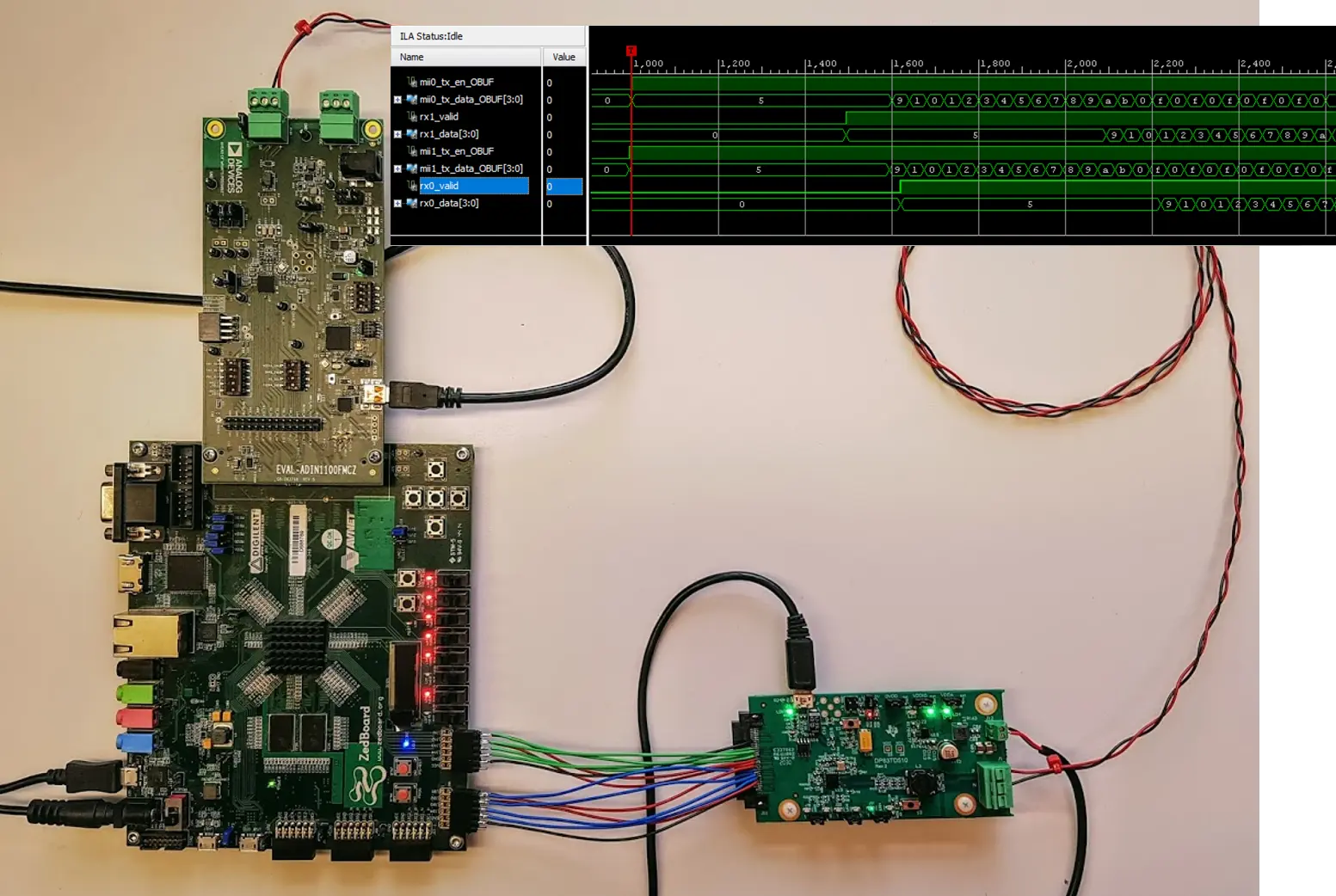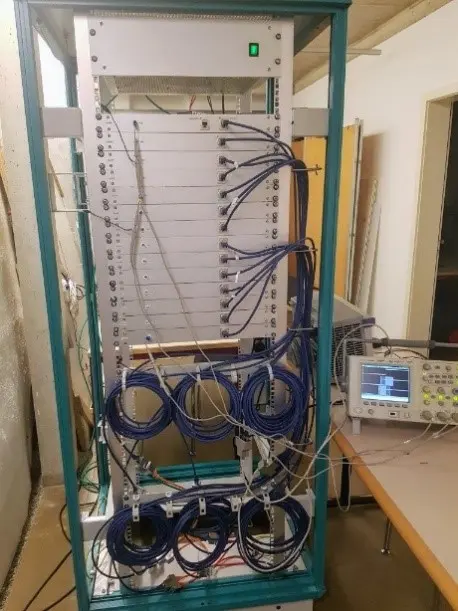Communication Network Engineering
A distributed system often requires deterministic, fast and reliable communication between distributed devices as well as precise timing coordination of networked nodes. InES research includes the development, optimization and verification of internationally standardized protocols as well as application and customer specific systems.
Communication Network Engineering

Our research activities focus on communication solutions for industrial and professional applications. Typical requirements for such communication systems are:
- Control over latencies and delays
- Scalability
- Precise time distribution within the network, both for applications and for network operation itself
- High availability or redundancy in the network
- IP connectivity all the way to the end nodes
None of these requirements is new, and many proprietary and standardized solutions to choose from exist. However, these often have weak spots or are strongly driven by interest groups. CAN, PROFIBUS or EtherCAT are well-known and established in the market, but have limitations in bandwidth, compatibility, or IP connectivity. Industrie 4.0 requires multi-vendor, open standards to realize Smart Factories or «Plug & Produce».
InES has a long-standing experience in design and application of real-time networks and has actively contributed to standardization in IEEE and IEC, especially in the areas of redundancy and high-precision time synchronization. For time synchronization according to IEEE 1588 (PTP) and IEEE 802.1AS (gPTP), we have our own implementations, which we use in our research activities, but which can also be licensed.
Projects and Technologies
Precision Time Synchronization using PTP and gPTP

Source: Time-aware network (IEEEE 802.1AS-2020)
The Precision Time Protocol (PTP, IEEE1588) and the generalized Precision Time Protocol (gPTP, IEEE 8201.AS) are two related protocols for highly accurate time synchronization over different transmission media. InES has been actively involved in IEEE since the beginning of standardization. With time stamping often found integrated in network chips today, accuracies below one microsecond and in special implementations down to the nanosecond range are possible.
Single Pair Ethernet

Single Pair Ethernet is nowadays available for speeds from 10 Mbit/s to 5 Gbit/s, with different characteristics regarding maximum segment size and topology. Due to the reduced cabling costs, these solutions are attractive for a wide range of applications. Examples are automotive or building and process automation. InES investigated how to reduce latencies in 10 Mbit/s Ethernet with frame preemption (IEEE 802.3br). The investigations were supported by the APL project. The results were presented to the «Enhancements to Point-to-Point Single Pair Ethernet Study Group» of IEEE 802.3. The newly established task force IEEE802.3de «Enhancements to the MAC Merge function and the Time Synchronization Service Interface (TSSI) to Include Point-to-Point 10 Mb/s Single Pair Ethernet» will amend IEEE Std 802.3TM accordingly.
Time Sensitive Networking (TSN)

Several teams at InES are working in the field of Time Sensitive Networking. Whether, to which extent and in which applications the use of TSN technology is appropriate is not always easy to answer.
Consumer-Technology for Industrial Applications

InES researched how a powerline communication system can be used for IP communication in industrial applications such as elevator control. Detailed investigations on latency and jitter as well as a suitable system architecture are the key for an application of the technology.
Seamless Redundancy with PRP and HSR

InES was actively involved in the development of seamless redundancy techniques for communication networks. The research was contributed to IEC TC65 and is now standardized as IEC 62439-3 and used, for example, in the power plant and energy industry.